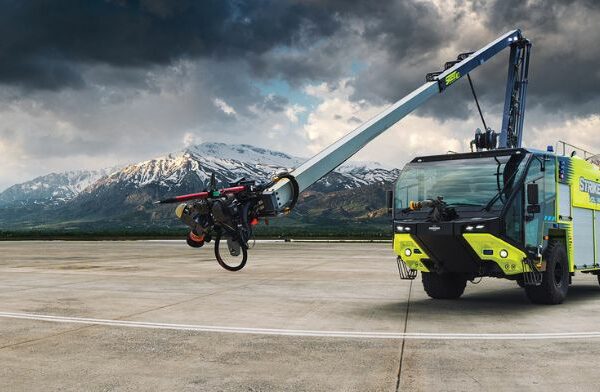As France’s first carbon neutral airport group, Aéroports Côte d’Azur – which manages Nice Côte d’Azur, Cannes Mandelieu and Gulf of St-Tropez – has revealed its plant to put an end to greenhouse gas emissions in just 10 years. The group also intends to show the way forward for the entire aeronautical sector by proposing concrete measures to limit the impact of air transport.
The 10 year deadline will put the airport well ahead of the 2050 deadline for net zero emissions that 192 European airports signed up to in June 2019.
Each of the airports in the Aéroports Côte d’Azur group will advance at their own pace, in line with their individual needs and requirements. Gulf de St-Tropez Airport, which has been carbon neutral since 2018, will produce zero greenhouse gas emissions in 2020, by further cutting its emissions and installing a carbon well on site that will absorb 23 tonnes of CO2 equivalent of residual emissions. Looking ahead this platform will become a net absorber of 2.5 tonnes of CO2 equivalent in 2022, and of 21 tonnes by 2034. As such the airport will continue to contribute to the conservation of the region, by absorbing the emissions from aircraft in the approach, taxiing and take-off phases.
Cannes Mandelieu will follow the same roadmap, with five emission reduction stages leading up to 2030, when the zero emissions target will be reached. From 2034, the platform will even be able to absorb at least 14 tonnes of CO2 equivalent per year.
Meanwhile, Nice Côte d’Azur, which became France’s first carbon neutral airport in 2016 and has already slashed its carbon emissions by 80% in 10 years, faces an even tougher challenge. With passenger numbers continuing to rise year on year, it has become France’s second-largest airport, behind Paris.
“Today, passengers passing through our terminals account for hardly 100 grams of CO2, which is 92% less than the average of European airports,” explained Isabelle Vandrot, Head of Sustainable Development and the Environment at Aéroports de la Côte d’Azur.
“This figure represents a record and an incentive to do even better. But these last few grams are the most difficult to eliminate, because they bring us face to face with technical or technological barriers that must be raised, if we are to achieve our goal of zero grams of emissions in just 10 years” Vandrot continued.
In 2020, the airport will have reduced its emissions by 83% by electrifying 80% of its service vehicles, then by 86% in 2021, by making its freight terminal and technical centre gas-free. The gradual withdrawal of gas from all the buildings, the development of photovoltaic panels and the decarbonisation of special machinery will all contributed towards the airport achieving its goal of zero greenhouse gas emissions by 2030.
Nice Côte d’Azur will also install carbon wells to absorb the CO2 emitted by aircraft using the aircraft.
“Taking action to reduce our own environmental footprint to zero is meaningless, unless emissions are reduced along the entire chain. Reducing emissions in the approach, taxiing and take-off phases is an important step. This is what we call the LTO cycle,” said Dominique Thillaud, Chairman of the Board of Aéroports de la Côte d’Azur.
He added: “At Nice airport, this cycle represents 10.75 kg of CO2 per passenger. This is the carbon balance of a single tropical mango, for example. Over the last five years, this figure has dropped by 20%, while the number of aircraft using the airport has increased by 2.5% during the same period. This shows that it is possible to increase traffic and to decrease emissions at the same time. This is encouraging, and we want to go further and faster.”
Sustainable measures that will adopted across all three airports include: moving to 100% electric fleet vehicles; making use of gangways that supply electricity to parked aircraft so on-board equipment can be used without running auxiliary engines which are noisy and polluting; preparing for the arrival of sustainable aviation fuel; and signing electricity supply contracts with a green and locally-sourced energy guarantee.
“Our approach may appear to be highly virtuous, but it amounts to the simple application of obvious common sense. In Nice, the electricity supplied to all our gangways and pop-outs is green. We funded the extension of the tram lines to our terminals and we introduced a 100% electric passenger shuttle service. We have been neutral since 2016 and we will meet the 2030 deadline”, Thillaud highlighted.
Measures for airlines include: systematically following the single-engine taxi procedure; promoting sustainable aviation fuel; adjusting airport fees according to the actual environmental footprint of each aircraft. The measures have been designed to be inciting, rather than punitive, prompting action instead of levies.






